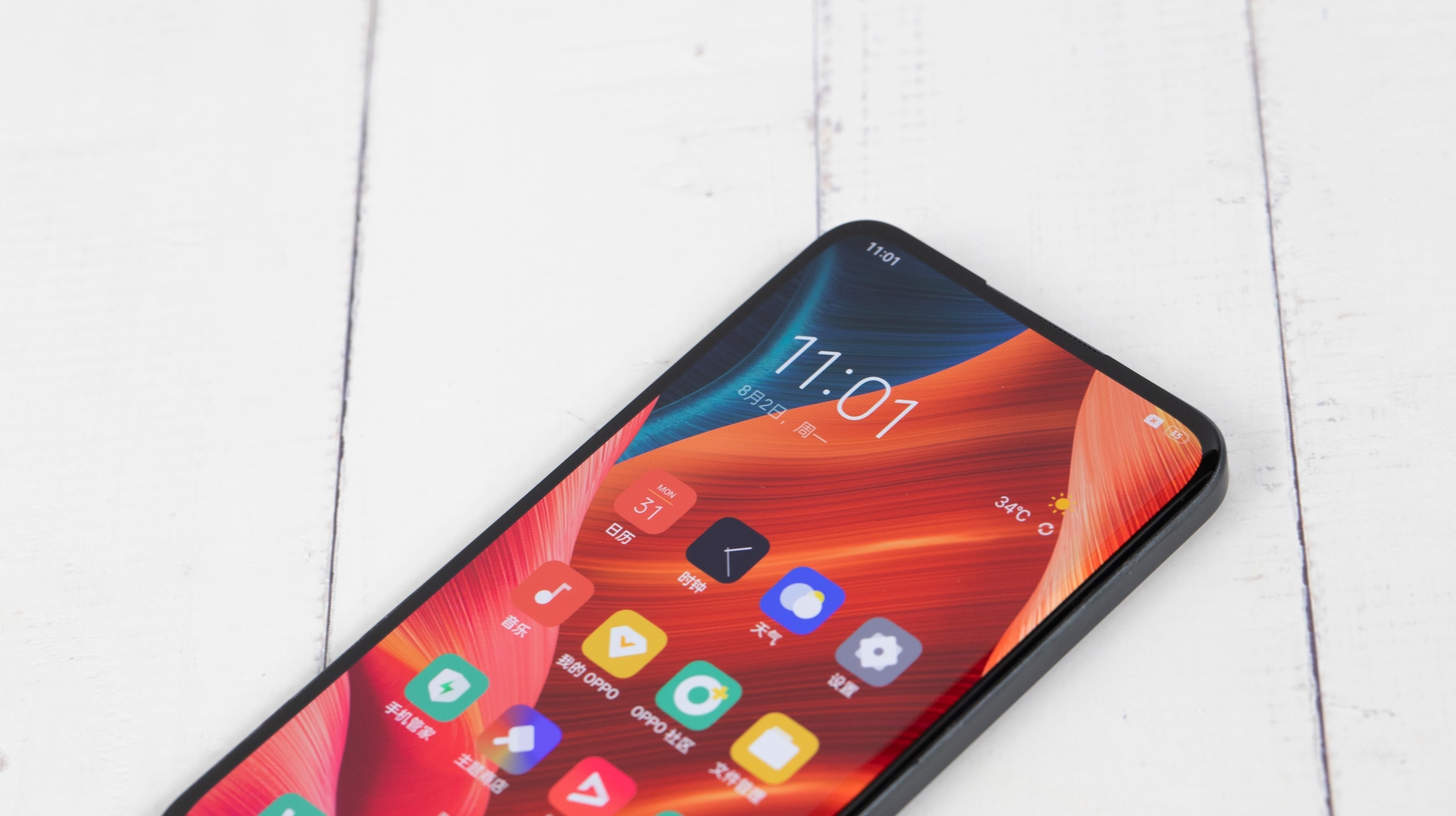Oppo may have mastered the under-display camera, so could we see this in the Find X4?
Better photos and less visibility

Under-display cameras could be the next big thing in phones, but as the implementation on the ZTE Axon 20 5G shows, two things need to be solved first: the image quality, and the visibility of the camera section on the screen. Oppo though has announced a new under-display camera and it claims to have solved both those issues.
This new tech is the third generation of Oppo’s under-display camera, though notably no versions of it have yet made it to an Oppo smartphone – but if Oppo’s claims hold up then this one might.
The company claims that it has shrunk the size of the pixels in the camera portion of the screen, but hasn’t decreased the number, meaning that the whole display has a consistent 400 pixels per inch. That’s important, because one of the reasons you can sometimes see the camera panel on the Axon 20 5G is that there are fewer pixels in that part of the screen.
- Check out the best Oppo phones
- Read our full Oppo Find X3 Pro review
- These are the best camera phones
Also assisting in this seamless design is the use of transparent wiring that’s 50% narrower than in the previous generation, plus the ability to precisely control screen brightness with a deviation of just around 2% - meaning that the camera section won’t look noticeably darker than the rest of the display.
Plus, some of these upgrades also apparently have the benefit of improving the lifespan of the display by up to 50%.


So that might be one problem solved, but what about photo quality? Well, Oppo claims to have trained an AI on tens of thousands of images, in order for it to avoid problems caused by light diffraction – which is an issue with early under-display cameras. The company’s AI algorithms can also apparently help avoid blur, image glare, and help with HDR and auto white balance.
You can see examples of how the camera apparently performs in the images above, though we’d take them with a pinch of salt, since they were selected by Oppo and taken in good conditions. Still, they’re promising, if perhaps not a match for the very best selfie snappers.
Sign up for breaking news, reviews, opinion, top tech deals, and more.
Oppo hasn’t said if or when we’ll start seeing this tech in phones, but the Oppo Find X4 range next year could be a candidate for it if this works as well as the company claims.

Analysis: under-display cameras could be big, but probably not for a while
While everything Oppo has said here sounds promising, we’d take it with a pinch of salt until we’ve seen the results on an actual smartphone. Given how weak under-display cameras have been so far, we’d be surprised if they’re now at the point where they’re ready for the mainstream.
Even if they are, we wouldn’t expect Apple for example to use them for a long time if ever. That company is often among the last to incorporate new technologies, as it waits for them to be perfected, and with all the components required for Face ID it could be trickier to incorporate this tech on an iPhone.
But even companies like Samsung probably won’t put these cameras in a mainstream flagship until at least 2023. Beyond our skepticism that the tech is ready, development of the Galaxy S22 range is probably well under way by this point, so switching to an under-display camera now may not be an option.
Still, it’s possible that an Oppo phone will use the tech, and there’s an outside chance that we may even see it in the OnePlus 10 now that these two brands are working closer than ever.
James is a freelance phones, tablets and wearables writer and sub-editor at TechRadar. He has a love for everything ‘smart’, from watches to lights, and can often be found arguing with AI assistants or drowning in the latest apps. James also contributes to 3G.co.uk, 4G.co.uk and 5G.co.uk and has written for T3, Digital Camera World, Clarity Media and others, with work on the web, in print and on TV.